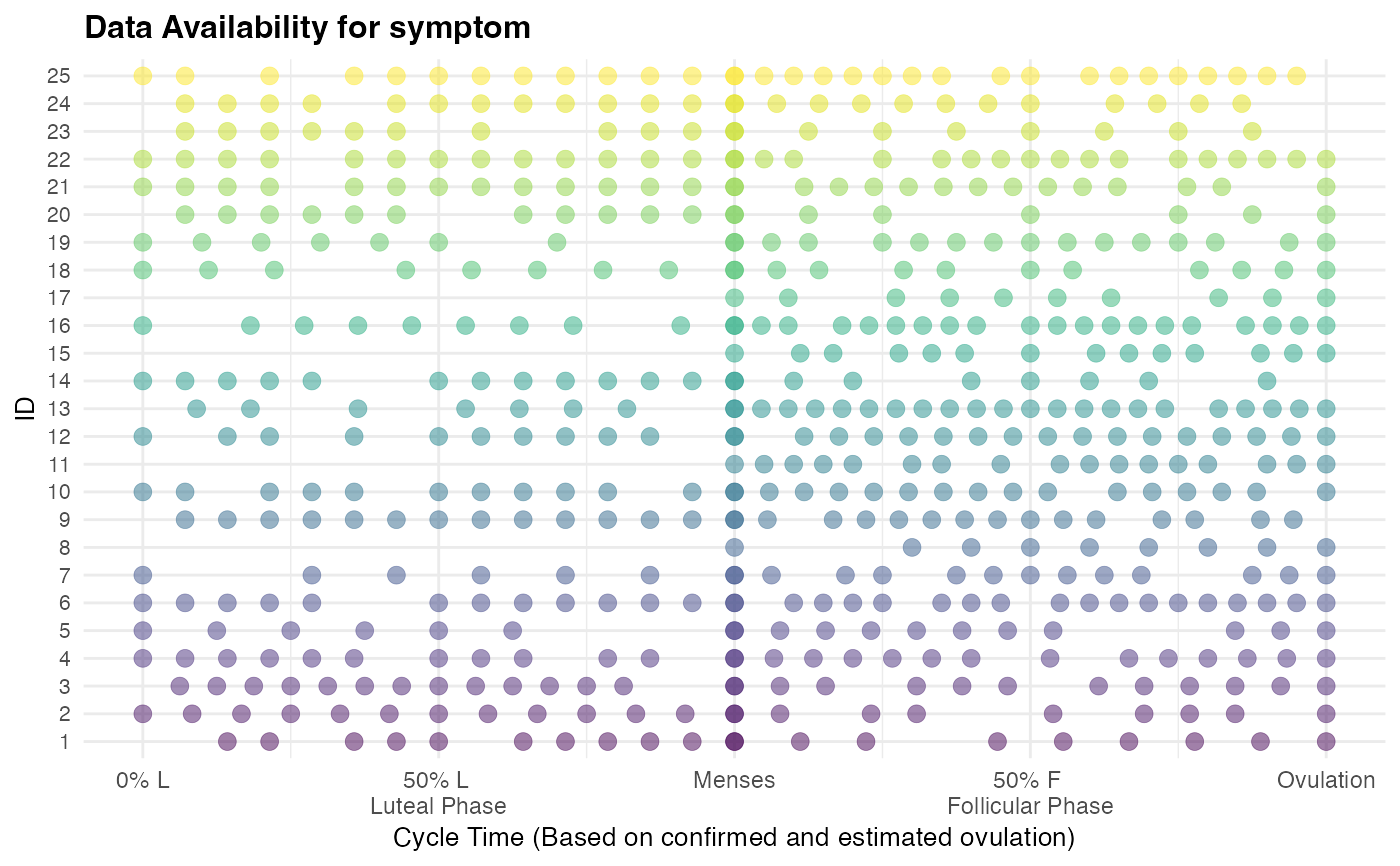Analyze Non-Missing Symptom Data by Cycle Phase
cycledata_check.RdThis function provides detailed information about the availability of non-missing symptom data, stratified by cycle phases (luteal and follicular) and overall availability. It also generates visualizations to aid in data quality assessment.
Arguments
- data
A data frame containing the input data.
Must include columns for scaled cycle day variables and the symptom or dependent variables of interest.
- symptom_columns
A character vector of column names representing the dependent variables of interest. For example,
c("symptom1", "symptom2", "symptom3"), where each name corresponds to a column in your data set.
Value
A list containing three components:
by_id: A data frame summarizing non-missing values for each ID and symptom, including:Total number of non-missing values.
Number of non-missing values during the luteal phase.
Number of non-missing values during the follicular phase.
overall: A data frame summarizing non-missing values for each symptom, including:Total number of non-missing values.
Number of non-missing values during the luteal phase.
Number of non-missing values during the follicular phase.
Plots: Visualizations showing the availability of non-missing data for each symptom, stratified by ID.
Examples
# Load example dataset
cycle_df = cycledata
data_with_scaling <- pacts_scaling(
cycle_df,
id = id,
date = daterated,
menses = menses,
ovtoday = ovtoday,
lower_cyclength_bound = 21,
upper_cyclength_bound = 35
)
#> id: id
#> date: date
#> menses: menses
#> ovtoday: ovtoday
# Analyze symptom data availability
data_available_info <- cycledata_check(
data_with_scaling,
symptom_columns = c("symptom")
)
#> Warning: ID number 8 has < 10 observations for symptom
# View results
print(data_available_info$by_id)
#> # A tibble: 25 × 4
#> id symptom_nonNA symptom_luteal symptom_follicular
#> <int> <int> <int> <int>
#> 1 1 20 10 10
#> 2 2 22 12 10
#> 3 3 26 13 13
#> 4 4 26 11 15
#> 5 5 18 6 12
#> 6 6 31 12 19
#> 7 7 20 6 14
#> 8 8 9 0 9
#> 9 9 29 13 16
#> 10 10 28 11 17
#> # ℹ 15 more rows
print(data_available_info$overall)
#> # A tibble: 1 × 3
#> symptom_nonNA symptom_luteal symptom_follicular
#> <int> <int> <int>
#> 1 575 218 357
print(data_available_info$data_symptom_plots$symptom)
